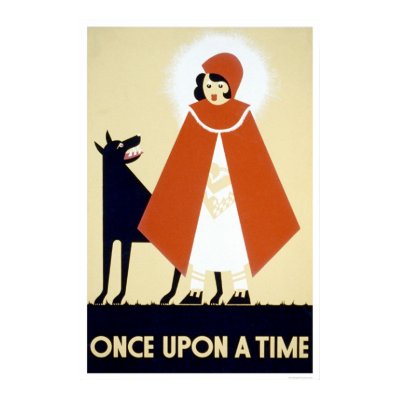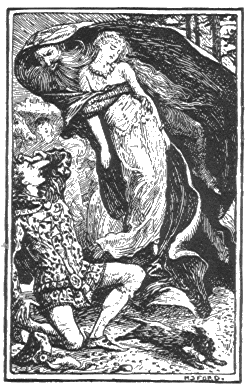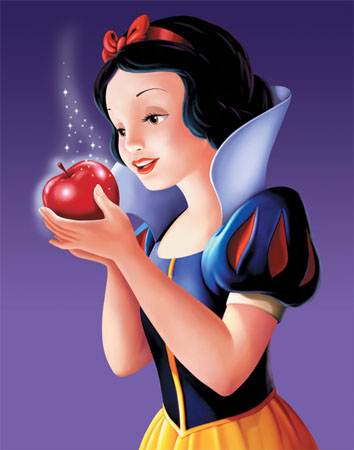
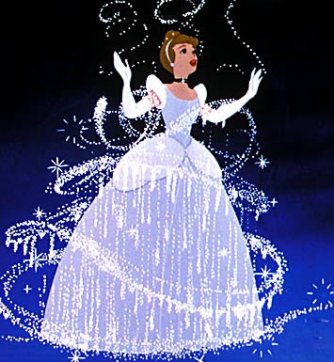












 First of all, when I saw it was a collection of essays specifically collected by men, that struck me as odd, but as Maria Tatar and Kate Bernheimer remind us in the Foreword and Introduction, in modern times it's very unusual for men to admit interest in fairy tales. In the past, the foremost collectors and theorists on fairy tales were men, but today the only major one that comes to my mind is Jack Zipes, whereas there are a host of women doing wonderful work in the field. Ironic that as academia becomes more infiltrated by women, certain areas of study are pushed aside and thought of as only for women.
First of all, when I saw it was a collection of essays specifically collected by men, that struck me as odd, but as Maria Tatar and Kate Bernheimer remind us in the Foreword and Introduction, in modern times it's very unusual for men to admit interest in fairy tales. In the past, the foremost collectors and theorists on fairy tales were men, but today the only major one that comes to my mind is Jack Zipes, whereas there are a host of women doing wonderful work in the field. Ironic that as academia becomes more infiltrated by women, certain areas of study are pushed aside and thought of as only for women.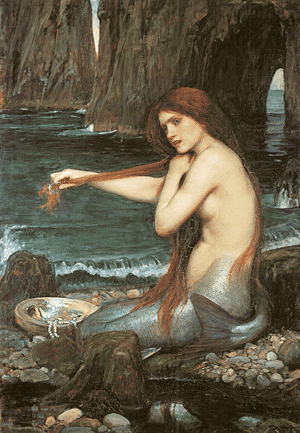 Here's a manatee. I don't see any resemblance at all. Maybe Columbus needed glasses.
Here's a manatee. I don't see any resemblance at all. Maybe Columbus needed glasses.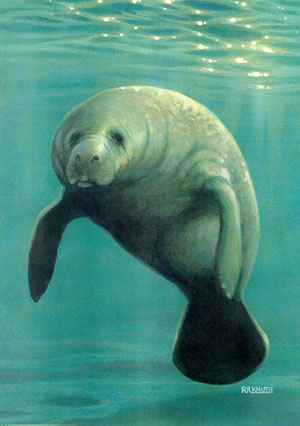 The article goes on to say that John Smith also saw a mermaid, but unlike Columbus, he thought she was "by no means unattractive."
The article goes on to say that John Smith also saw a mermaid, but unlike Columbus, he thought she was "by no means unattractive."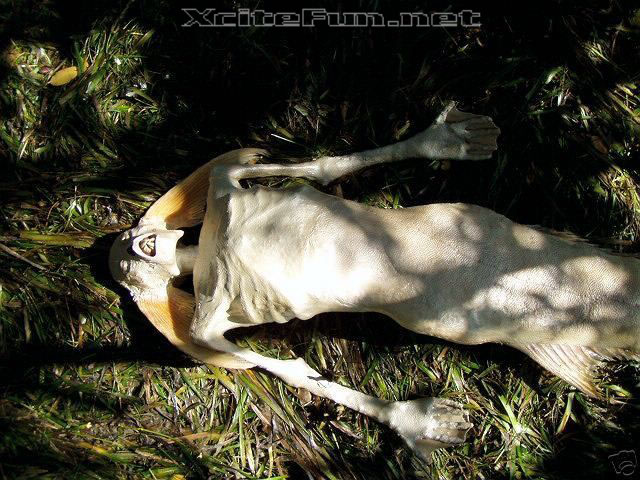
 I love the idea of twisting traditional plots-making Elphaba the true hero and tying in the characters we know of as Tin Man, Scarecrow, and Cowardly Lion to people in Elphaba's past. But the message really got me-one that I specifically needed to hear at that time in my life, as well as in general-about the importance of not sitting back and letting evil happen, but going out and doing something about it, even if it may cost you.
I love the idea of twisting traditional plots-making Elphaba the true hero and tying in the characters we know of as Tin Man, Scarecrow, and Cowardly Lion to people in Elphaba's past. But the message really got me-one that I specifically needed to hear at that time in my life, as well as in general-about the importance of not sitting back and letting evil happen, but going out and doing something about it, even if it may cost you.
The musical turns the world of the Wizard of Oz upside down. What was once black is now white, what was white is now black-but the world is still one of black and white. The book does not attempt to villainize Elphaba, or to make her out to be a heroic victim. Maguire's purpose was to explore the character and history of the Wicked Witch of the West in a way that fits in more closely with the original books and movie. Not to implicate her from all wrongs, but to create a scenario in which a person would be so obsessed with her sister's red shoes (silver, in the original). And, if the witch did have green skin, how would that affect her upbringing and ultimately the person she became?
The book is definitely an adult book, in contrast to the family-friendly musical. It's more dark and gritty and doesn't even feel very much like a fantasy because the fantastic world of Oz is so like our world. If I had read the book first I probably would have appreciated its approach more-it wasn't till I had time to process afterwards that I understood it better.
 This is a theme that fascinates me, but I was surprised to discover in my research that few other authors touched on the subject. In fact, given the importance of the theme in the book, it's pretty much ignored in most papers and books.
This is a theme that fascinates me, but I was surprised to discover in my research that few other authors touched on the subject. In fact, given the importance of the theme in the book, it's pretty much ignored in most papers and books.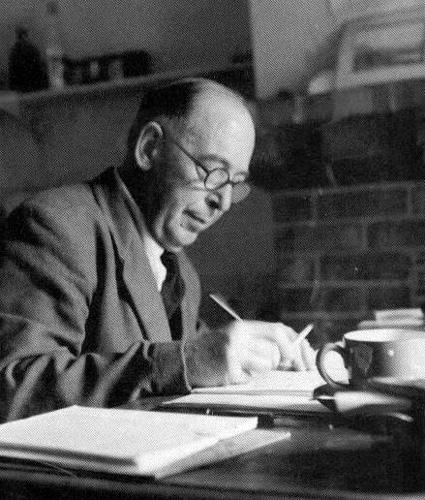

 However, there are some exceptions to the rule: Gail Carson Levine's Fairest. This book features a hideous girl with a beautiful voice in a land where singing is valued as highly as beauty. I would LOVE to live in a land like that (I am definitely one of those people who wishes every deep emotion would trigger backup music and a song with choreographed dancing). It's a very good story-I found it on the bookshelf of a girl I was babysitting one day and started it, and after I went home I had to go to the library and finish it. Then there's Penelope, in which Christina Ricci's character has a pig snout for a nose. Yet first of all, these examples are hardly classics like the male versions I mentioned before, and I also wonder about their implied messages. Fairest has good messages about how each girl is beautiful on their own, but seems to put a lot of pressure on the boys to fall in love (basically) at first sight-yet now they're not supposed to judge by beauty, but instantly know character. If boys do judge by appearances-and let's face it, we all do to some degree, should we ignore that fact? No one would claim that beauty/appearance doesn't matter at all. How do we deal with it in the world in which we live?
However, there are some exceptions to the rule: Gail Carson Levine's Fairest. This book features a hideous girl with a beautiful voice in a land where singing is valued as highly as beauty. I would LOVE to live in a land like that (I am definitely one of those people who wishes every deep emotion would trigger backup music and a song with choreographed dancing). It's a very good story-I found it on the bookshelf of a girl I was babysitting one day and started it, and after I went home I had to go to the library and finish it. Then there's Penelope, in which Christina Ricci's character has a pig snout for a nose. Yet first of all, these examples are hardly classics like the male versions I mentioned before, and I also wonder about their implied messages. Fairest has good messages about how each girl is beautiful on their own, but seems to put a lot of pressure on the boys to fall in love (basically) at first sight-yet now they're not supposed to judge by beauty, but instantly know character. If boys do judge by appearances-and let's face it, we all do to some degree, should we ignore that fact? No one would claim that beauty/appearance doesn't matter at all. How do we deal with it in the world in which we live?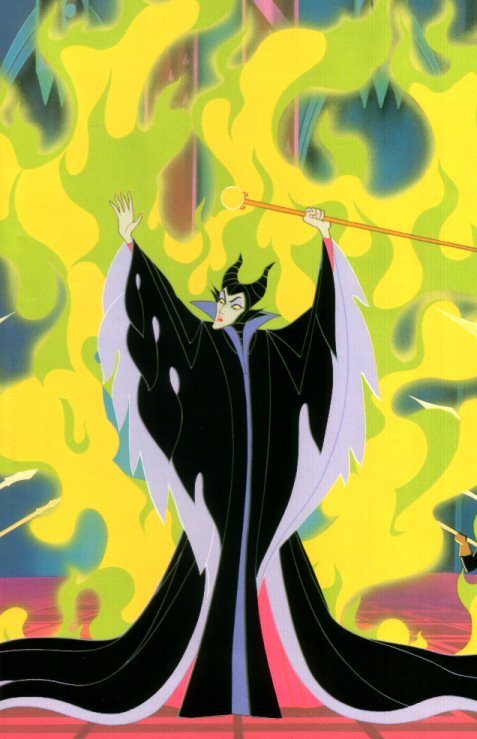 He mentioned a child who got in trouble in the playground for repeatedly yelling, "Stand back, you fools!" Eventually his teachers figured out he was quoting Maleficent.
He mentioned a child who got in trouble in the playground for repeatedly yelling, "Stand back, you fools!" Eventually his teachers figured out he was quoting Maleficent. He showed us these fascinating pictures drawn by a child. (He promised he would have the outline posted on the web later that day, and I haven't found it yet. I'll keep checking and load the pictures if I can, or at least link to the site.) The child had drawn Jafar, only the drawing was a red, completely unidentifiable blob. The researchers taught the child about parts and wholes-everything is part of a whole, and has its own parts. After a short amount of time, the child drew Jafar again, but this time the picture had limbs and was recognizably human. After a little more training, the child drew Jafar a third time, but this time the resemblance was unmistakable.
He showed us these fascinating pictures drawn by a child. (He promised he would have the outline posted on the web later that day, and I haven't found it yet. I'll keep checking and load the pictures if I can, or at least link to the site.) The child had drawn Jafar, only the drawing was a red, completely unidentifiable blob. The researchers taught the child about parts and wholes-everything is part of a whole, and has its own parts. After a short amount of time, the child drew Jafar again, but this time the picture had limbs and was recognizably human. After a little more training, the child drew Jafar a third time, but this time the resemblance was unmistakable. 
This came up when I searched for "Disney Princesses." An attempt to make them more human and relatable?
But overall, Disney movies-as well as other movies-are great teaching tools in general for kids with special needs. While some teachers might shy away from using movies because it's "cheating," movies provide great modelling of correct grammar, plotlines, realistic facial expressions (especially good for people with autism), and in tune singing. Plus, if a teacher uses a still shot from Mary Poppins, for example, to review vocabulary, then every time the child watches that movie again, the vocabulary words are reinforced, unlike a random worksheet.

 How cute is this Little Red Riding Hood teapot? Link to Modcloth (where it is, unfortunately, currently out of stock)
How cute is this Little Red Riding Hood teapot? Link to Modcloth (where it is, unfortunately, currently out of stock)
 Marie Taglioni is most famous for her role in La Sylphide, in which she debuted this new style of dancing. David Barber's summary of the ballet: "La Sylphide tells the story of a young Scotsman named James who's about to get married to a woman he's not sure he loves. (She's his cousin and her name's Effie, neither of which may have helped.) The night before their wedding, he falls asleep and dreams of a beautiful winged fairy, a sylphid or sylph, who flies down and tries to lure him away. He follows her into the forest, but thanks to an evil spell by the neighborhood wicked witch, her wings fall off and she dies. At the end of the ballet, some of her sister sylphs fly down to carry her away, leaving James alone in the woods while Effie goes off to marry someone else entirely. Bummer." (Taken from Barber's Tutus, Tights, and Tiptoes: Ballet History as it Ought to be Taught-apparantly really cheap on Amazon).
Marie Taglioni is most famous for her role in La Sylphide, in which she debuted this new style of dancing. David Barber's summary of the ballet: "La Sylphide tells the story of a young Scotsman named James who's about to get married to a woman he's not sure he loves. (She's his cousin and her name's Effie, neither of which may have helped.) The night before their wedding, he falls asleep and dreams of a beautiful winged fairy, a sylphid or sylph, who flies down and tries to lure him away. He follows her into the forest, but thanks to an evil spell by the neighborhood wicked witch, her wings fall off and she dies. At the end of the ballet, some of her sister sylphs fly down to carry her away, leaving James alone in the woods while Effie goes off to marry someone else entirely. Bummer." (Taken from Barber's Tutus, Tights, and Tiptoes: Ballet History as it Ought to be Taught-apparantly really cheap on Amazon).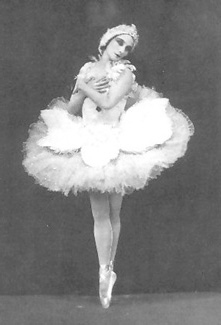 Marie Taglioni dancing the role of the Sylphide. The new technique of dancing on pointe helped convey the otherworldiness of the fairies, as they seemingly floated across the stage.
Marie Taglioni dancing the role of the Sylphide. The new technique of dancing on pointe helped convey the otherworldiness of the fairies, as they seemingly floated across the stage.Picture by Don McMurdo, Australian ballet, Swan Lake
But the most famous ballets are the three Tchaikovskys- Sleeping Beauty, Swan Lake, and The Nutcracker. The combination of plot, music, costumes and scenery together with dance make all of the above instant classics. It's so unfortunate that both fairy tales and ballet have become culturally associated with little girls, and become something that every girl is interested in and then "grows out of." Ballet is a beautiful and incredibly difficult art form- in fact, few professions (if any...) require the amount of discipline and commitment demanded from a professional ballet dancer.
 I really love X-men, and I really REALLY love Beauty and the Beast. The two combined is brilliant. I need to get my hands on this somehow.
I really love X-men, and I really REALLY love Beauty and the Beast. The two combined is brilliant. I need to get my hands on this somehow.






